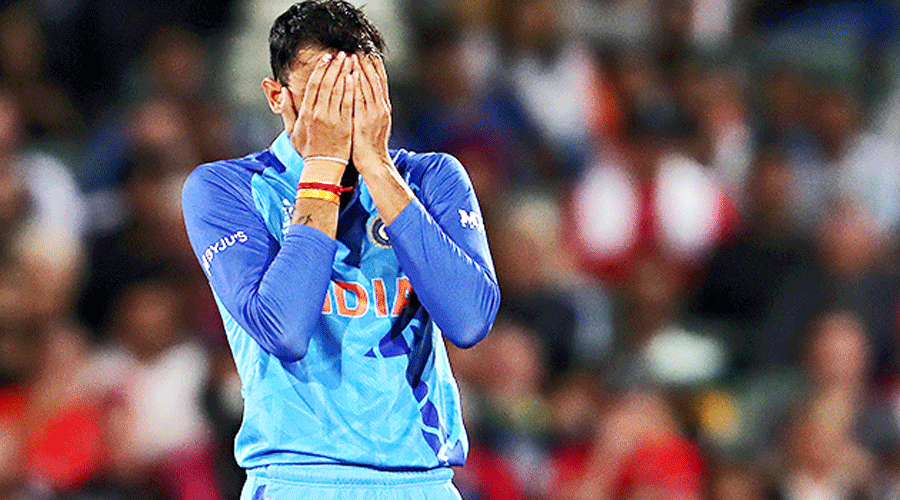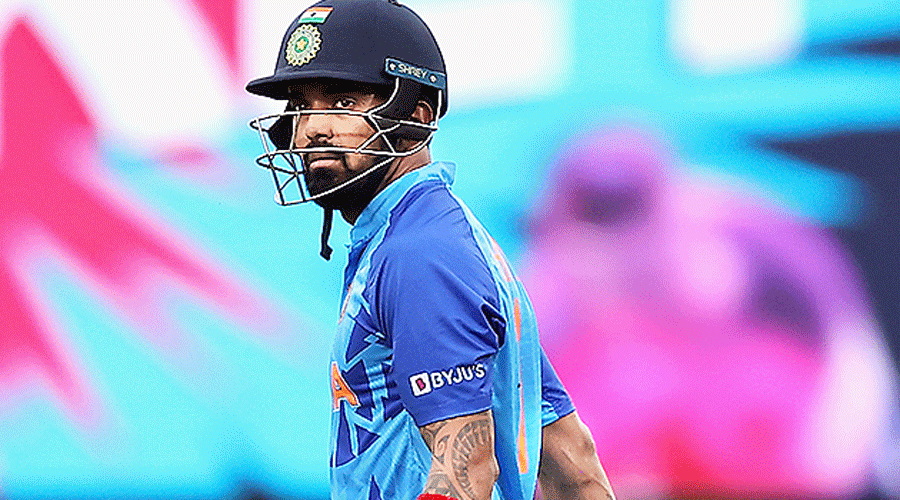Around the time when Jos Buttler and Alex Hales were stripping India’s reputation as the No.1-ranked T20I team naked at the Adelaide Oval, the Guinness World Records tweeted: “Easiest run chase in history?” While the post surely was in jest, the fact is, it was not too far from the truth.
India’s 10-wicket loss broke a billion hearts on Thursday, especially of those who already had the menu of this Sunday’s lunch fixed: a scrumptious serving of a classic Indo-Pak cricket match in the T20 World Cup final. But nothing comes ready on a platter in competitive sport, where a loss, more often than not, is a sum total of multiple miscalculations. So what went wrong? The Telegraph tries to dissect the defeat, which was as embarrassing as the 36 all out in a Test against Australia about two years ago. That too was in Adelaide.

Axar Patel. Getty Images
⚫ Wrong ’un: Head coach Rahul Dravid talks of keeping an “open mind” on matters of team selection. But does he practise what he preaches? On a pitch which had little for finger spinners, India went with Axar Patel, who anyway had done too little in the previous matches he played to deserve a place in the XI in the semi-final. Yuzvendra Chahal’s aggressive wicket-taking leg-spin remained unused in the entire tournament. So while an Adil Rashid (1/20 in 4 overs) and even a Liam Livingstone excelled as wrist-spinners for England on Thursday, Chahal warmed the bench in the dugout. Reason? India did not want to change a winning combination. India lost to South Africa and almost lost to Pakistan and Bangladesh. So what is a winning combination? One that beats Zimbabwe and The Netherlands?
⚫ Powerless in Powerplay: The first six overs in a T20 are called Powerplay overs for a reason. Yet, India slept at the start of most of their matches as if they had a fixed deposit of runs to encash in the later overs. Statistics narrate India’s sorry state better — among all the teams, India’s run rate — 6.02 — from overs 1-6 at this T20 World Cup is ranked second from the bottom, just above the UAE. On Thursday too, India scored 38/1 in the Powerplay, while England amassed 63/0. And we think the IPL has made us a T20 powerhouse!
⚫ KL, the un-droppable: Virat Kohli may think he is the biggest star in the current Indian team, but he is wrong. It is KL Rahul. At least it appears so. Both Rahul and captain Rohit Sharma, the India openers, looked clueless right from the onset of the World Cup. One can still accept Rohit keeping his place in the team being the skipper, but why Rahul, who had scores of 4, 9, 9 in his first three matches? Why couldn’t a Rishabh Pant or a Deepak Hooda be tried at the top? India’s runs per over for the opening wicket — 4.98 (88 runs in 106 balls) — is the worst of this Cup among all teams, minnows included. And don’t say Rahul got a 50 and a 51 against Bangladesh and Zimbabwe. Sir Geoffrey Boycott’s ‘grandmother’ too would have probably gotten those runs if she was given as many chances. By the way, Rahul was back at his best on Thursday. He made 5. High five?
⚫ Homework, what’s that: In the face of the Buttler-Hales onslaught, the India bowlers did not have a Plan B to fall back on. But why just blame them? India’s planning and preparation looked dubious much before Thursday. They groomed Dinesh Karthik as a finisher but did they really have faith in his abilities? Harshal Patel was touted as a death overs specialist, but that idea died early. Why not carry a raw Umran Malik with the team instead, especially in Australia? And what about playing 18 ODIs in the year of the T20 World Cup? Even Duckworth-Lewis-Stern’s formula is easier to comprehend than India’s World Cup plans.












